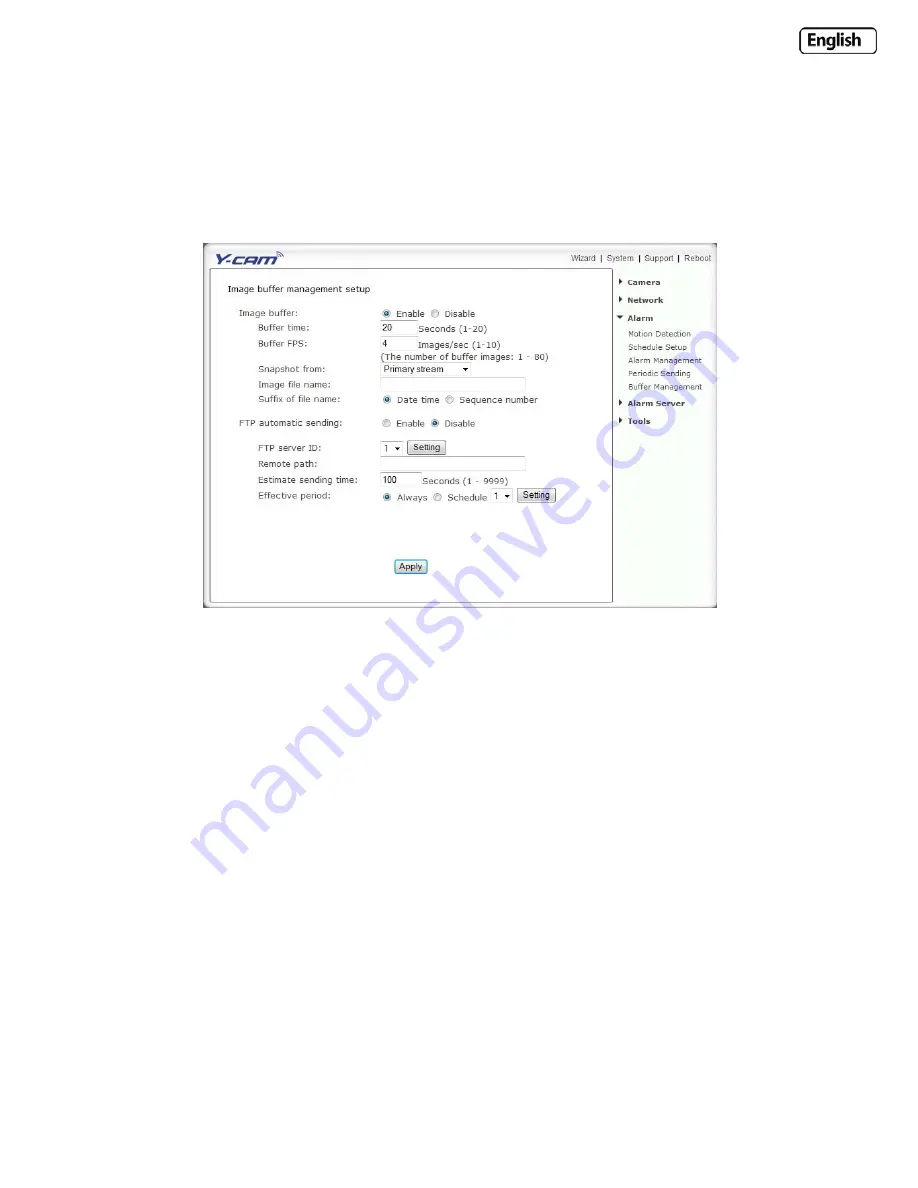
Page
44
6.37
Buffer
Management
This
function
is
very
useful
when
checking
to
see
what
happened
immediately
before
and/or
after
a
trigger.
Images
are
stored
internally
in
the
camera
from
the
time
immediately
preceding
the
trigger.
For
example,
by
setting
the
buffer
time
to
20
seconds,
when
motion
is
detected,
the
footage
recorded
will
start
20
seconds
prior
to
the
movement
being
detected,
and
will
stop
20
seconds
later.
[Image
Buffer]
Enable/Disable
buffering.
[Buffer
Time]
The
duration
for
which
alarm
should
be
triggered,
specified
in
seconds.
Enter
how
many
seconds
you
want
to
include.
[Buffer
FPS]
Frames
per
second
while
the
motion
is
triggered
it
can
be
any
value
from
1
to
10
images.
[Snapshot
From]
Select
the
stream
from
which
it
should
get
the
snapshot.
[Image
file
name
]
A
name
for
the
Image.
[Suffix
of
file
name]
Image
file
name
suffix
can
be
either
date
and
time
or
a
sequence
number.
[FTP
automatic
Sending]
Enable
this,
if
you
want
to
upload
all
the
images
present
in
buffer
to
an
FTP
Server.
[FTP
Server
ID]
Select
the
FTP
Server
number
from
the
list.
[Remote
path]
Path
where
to
save
the
image
file
on
the
FTP
server.
[Estimate
Sending
time]
The
time
after
which
camera
should
upload
images
to
an
FTP
Server.
Effective
Period:
[Always]
Always
trigger
the
alarm
upon
motion
detection
[Schedule]
Trigger
the
alarm
according
to
the
schedule
Click
Apply
to
confirm
your
settings.
Note:
The
maximum
length
of
the
combined
pre
‐
/post
‐
buffer
is
160.
e.g.
if
the
buffer
time
is
20
and
FPS
is
4,
the
camera
will
upload
160
images
on
to
the
FTP
Server,
80
images
pre
motion
and
80
images
post
motion.
If
the
pre
‐
or
post
‐
buffer
is
too
large
for
the
camera’s
internal
memory,
individual
images
may
be
missing.






























